Syn.: Lithospermum pilosum Nutt.
Family: Boraginaceae Juss.
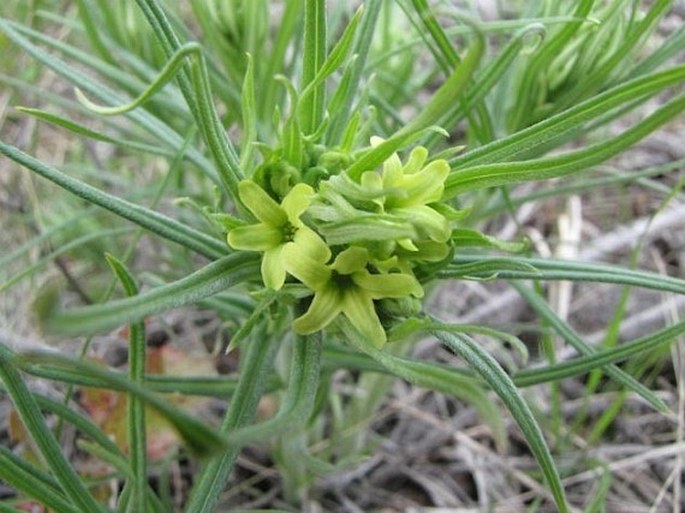
Distribution: The west of North America from western Colorado to southern Alberta to eastern Oregon and northeast California. Doesn’t reach Pacific coast.
Ecology: Grows on dry grasslands and among shrubs, in open woods, in elevations from 170 to 2000 m. Blooms at the end of spring and beginning of summer.
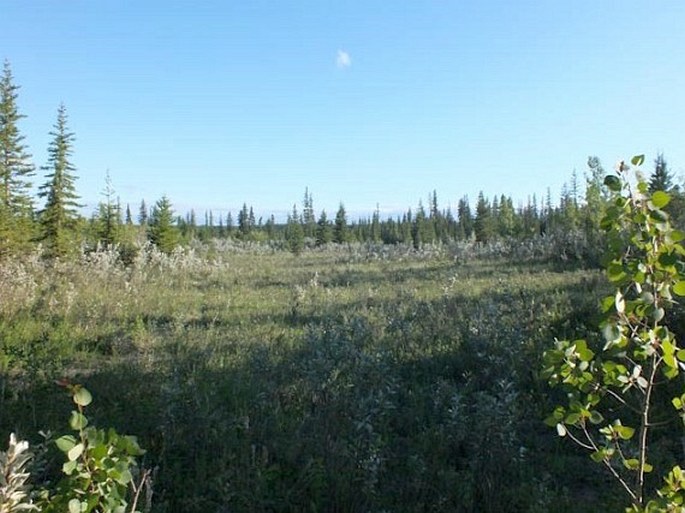
Description: Perennial herb, stem 20–60 cm tall, erect or leaning, mostly not branched or branched at the top, hairy, from stout base, roots thick, reddish brown. Leaves alternate, numerous, sessile, linear to lanceolate, 5–10 cm long, 5–10 mm wide, smooth edges, hairy. Inflorescence is a spike-like, scorpioid cyme, leafy; flowers pale yellow or greenish yellow, funnel-shaped, 5–8 mm long, pentamerous; sepals lanceolate, hairy. Fruit is a nutlet, white or brownish, 4–6 mm long, 4 nutlets per flower.
Use: Native peoples used an extract from pucoon as a form of birth control. Chemical analysis proved that the extract contains natural estrogen.
Note: Lithospermum seeds are extremely hard as the name implies (litho = stone, spermum = seed) and can damage enamel of your teeth.
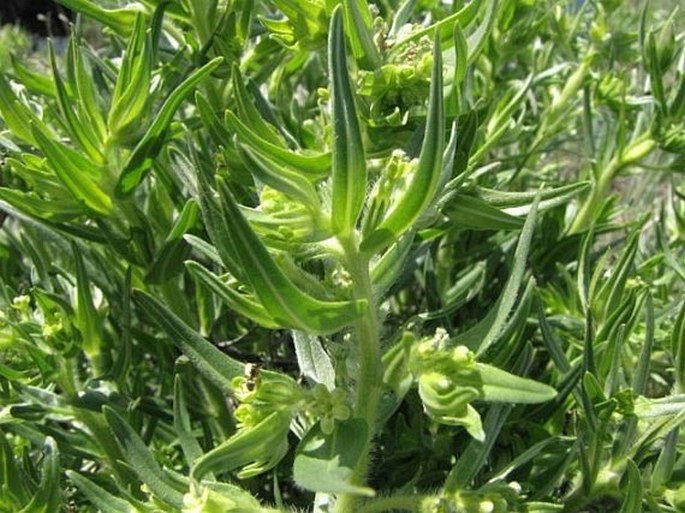
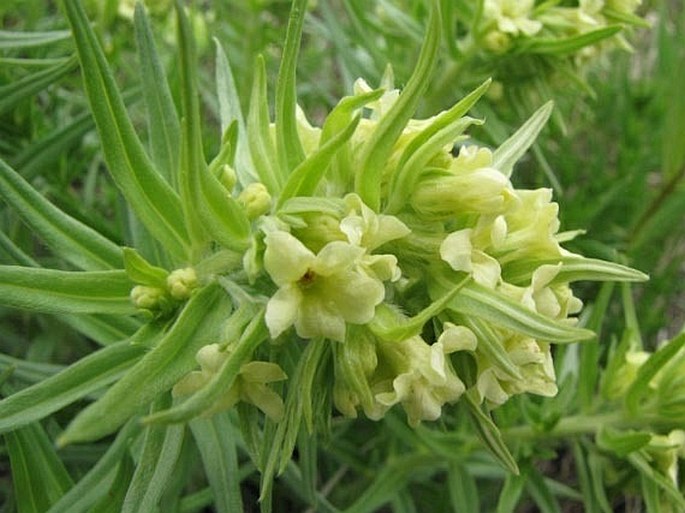
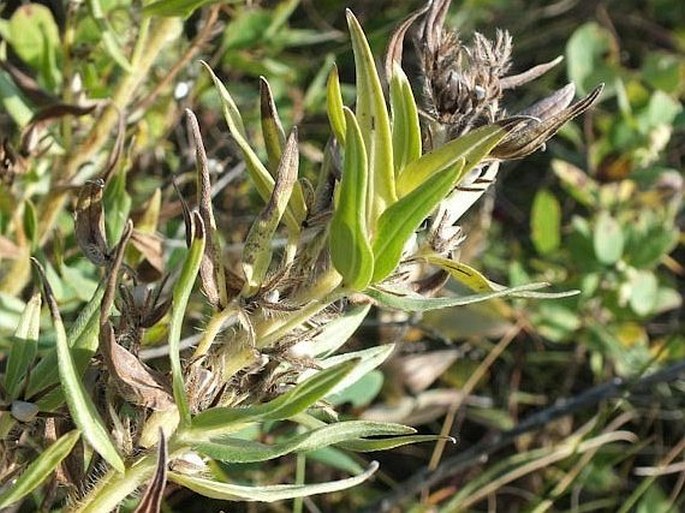
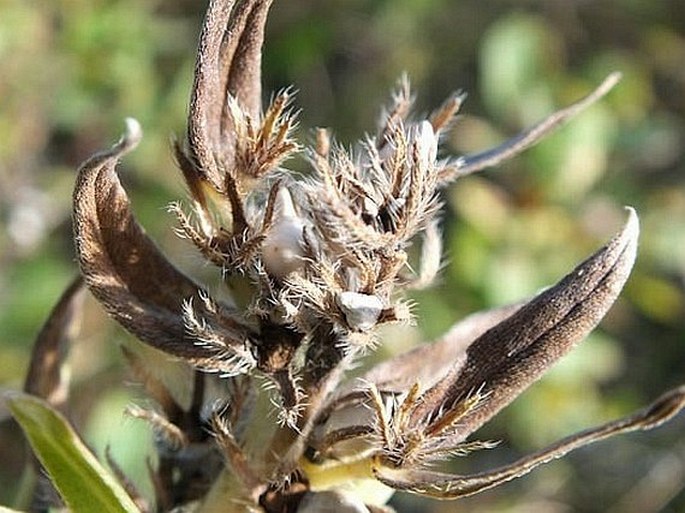
These images were taken in Canada, Alberta, Calgary, Weaselhead Natural Environment Park (2013).


